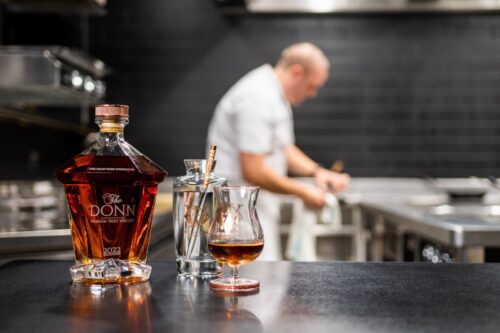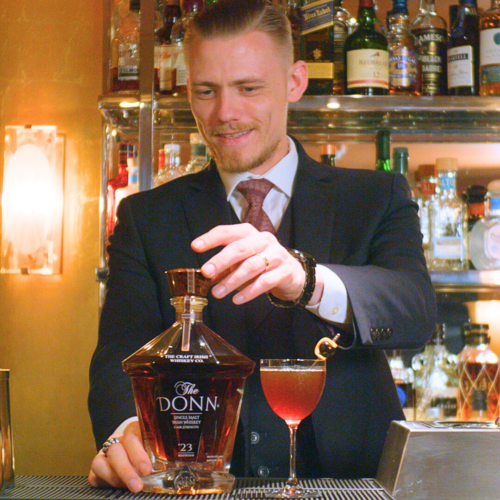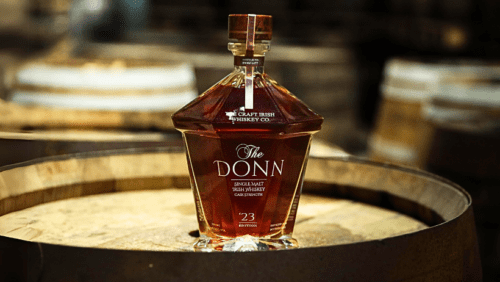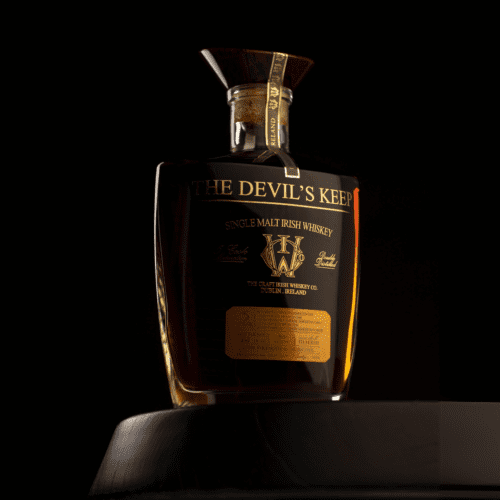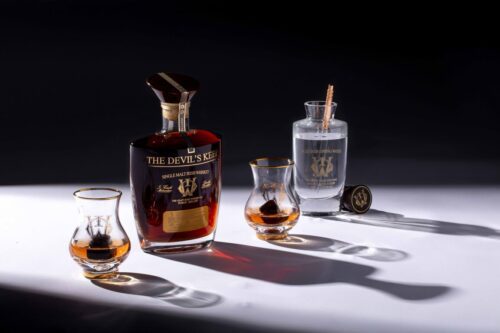If you’re a whiskey drinker, you’ll be used to being presented with a number of options – do you want it on the rocks? With water or neat? Or even in a cocktail? Self-proclaimed connoisseurs will happily tell you how to drink whiskey, but at the end of the day, it’s your whiskey. Nevertheless, there are some scientific facts to consider before pouring a glass. Read on to find out more.
There’s an age-old debate that rages on in the world of whiskey: how should a great dram best be enjoyed? DO savour it neat? With a drop of water? In a cocktail? Warm? Cold? The answer is “Yes”. The best way to enjoy your drinks is always “however you please.” Full Stop. After all, you’re the person who paid for it.
Now, having said that it’s not always obvious—particularly to whiskey newcomers—what their exact preference is for enjoyment. There’s no right or wrong way to drink whiskey, but each way is most certainly different. As with anything worth seeking out in life, it’s important to educate yourself a little on how to drink whiskey beforehand. So, let’s take a look at different whiskey preparations to understand what we can expect from each one.
Neat
The whiskey purists out there will almost certainly be members of this camp and if you asked them how to drink single malt whisky this is likely to be their answer. To sip a whiskey neat, all you need is an empty glass…Because you’re not going to be adding a single thing aside from the liquid in the bottle. This is the most straightforward way to get a sense of what the whiskey distiller and/or blender intended. But if you’re drinking something at cask strength, that means you could also end up with something ‘hot’, or high in proof, with an associated assertiveness that some might taste as an unpleasant burn. This sensation will only increase with an increase in temperature. So, at the very least, try not to sip your whiskey at anything above cellar temperature (12-14 degrees celsius). If you still find it to be a little too rough for your palate, don’t worry because you can always…
Add Water
This approach can involve many different methodologies. The seasoned aficionado might opt to use a pipette to precisely add no more than a literal drop or two of room temperature water into the whiskey dram. Even at such a small dosage, adding water to whiskey will open up some of the congeners and fusel alcohols responsible for flavour. Meaning that a little bit can go a long way in altering flavour in the glass. You might as well take it slow here: you can always add more water if you want, but you won’t be able to take it out. Further, you might want to invest in deionized or reverse osmosis water so that you’re not introducing outside minerals which can further impact or even overpower flavours from the whiskey. Of course, if you’ve bought the finest quality whiskey, you’ll want to treat it to the finest water. The Craft Irish Whiskey Co. took a three year search for the perfect water to partner with our whiskeys and found Hallstein Artisan Water. Sourced from an aquifer 700ft under the Dachstein Mountains in Austria, this water is the purest in the world, with high levels of oxygen, high PH levels, and naturally low sodium and nitrates. Deliver the precise amount of water with a precision pipette and you have the makings of the perfect whiskey experience.
On The Rocks
Casual drinkers will often clamour for a whiskey that tastes “smooth.” This term has been criticised by the cognoscenti for not being descriptive enough. But we’re not snobs here. It’s quite clear what is meant by the phrase: you’re looking for a liquid that goes down easily. It doesn’t fight you in the back of the throat. And there’s absolutely nothing wrong with wanting to avoid that. A great way to get there—even with a whiskey that’s fairly high in ABV (alcohol by volume)—is to serve it on the rocks. The colder a spirit is served, the less it’ll fight you as you swallow. This can be a double-edged sword, however. Yes, it will go down easier…But the finish of the whiskey will also be severely truncated. If you’re drinking a complex spirit that lingers on the back palate and reveals much of its character after you’ve taken the sip, drinking whiskey on the rocks will significantly reduce this particular experience. And for some drinkers, with some expressions of whiskey, that can be the very best part. Whiskey drinker beware.
Cocktails
Whisper this one around the whiskey purists. But again, if they don’t want to mix their favourite spirit with any modifiers, nobody is forcing them to! If you keep an open mind you just might find that the addition of something as simple as soda water—which, in a Collins glass, results in a classic highball—is every bit as rewarding, and far more refreshing than just the spirit on its own. There are brand ambassadors for high end single malt scotches that advocate combining their beloved product with cola. Sure, why not. Add some bitters and a sugar cube for a riff on an Old Fashioned. Throw in a touch of vermouth and stir it up for a Manhattan. Take a smoky whiskey and insert in some apple juice and brown sugar. You’ll be left with a delicious classic called Light My Fire. Some arrangements are sweet, some bitter. Some are “spirit-forward”—meaning you taste the whiskey at its base—others camouflage it more completely. All cocktails, however, endeavour to find some balance between spirit, dilution, sweet and sour. If you’re okay with that, experiment away. The only way you’ll know is if you try. So get out there and mix it up in the name of science.
Parting Notes On Whiskey Preparation
In summary, we just need to reiterate the fact that there’s no right way or wrong way to enjoy your whiskey. It’s all about suiting your own personal preferences. And the seasoned whiskey drinker is merely the one who is most attuned to their own palate. Think about all of the options above and consider which one typically appeals to you the most. Do you drink whiskey neat? Do you drink whiskey on the rocks? Do you enjoy adding water to whiskey? Maybe you like it at cask strength. Is a smoky whiskey your thing? Perhaps it depends on whatever kind of mood you’re in tonight.
Sure, a whiskey dram is a beautiful thing, but there’s many a whiskey distiller who would be content to enjoy the fruits of their labour on ice, with soda in a Collins glass! So just remember to keep things in perspective and don’t let any outside experts tell you any differently. Whenever you hear people prescribing “how to drink single malt” or “how to drink Irish whiskey,” just remember that they are not necessarily doing a service to the world of whiskey. This beautiful liquid we revere so much is all about enjoyment above all else. Sometimes we lose track of that and make things much more precious than they need to be. Because at the end of the day when you drink whiskey, the most unforgettable moments are typically tied to leisurely experiences shared with friends and loved ones.
All that being said, if you’re trying to get more serious about the technical analysis of whiskey, it’s important to invest in proper drinking vessels. Glencairns and sturdy rocks glasses are nice for nosing, as well as for sitting in your hand. But The Craft Irish Whiskey Co. recently developed the Érimón Glass as the most scientifically derived stemware the industry has ever seen. It is engineered specifically to dial down the stronger ethanol fumes that waft out from a glass of alcohol making it so that you can smell more of the good stuff and less of the burn. You’ll find it difficult to go back to anything else. Of course, that’s just how we like to enjoy our whiskey. To everyone else we say: bring on more drams and less drama!


